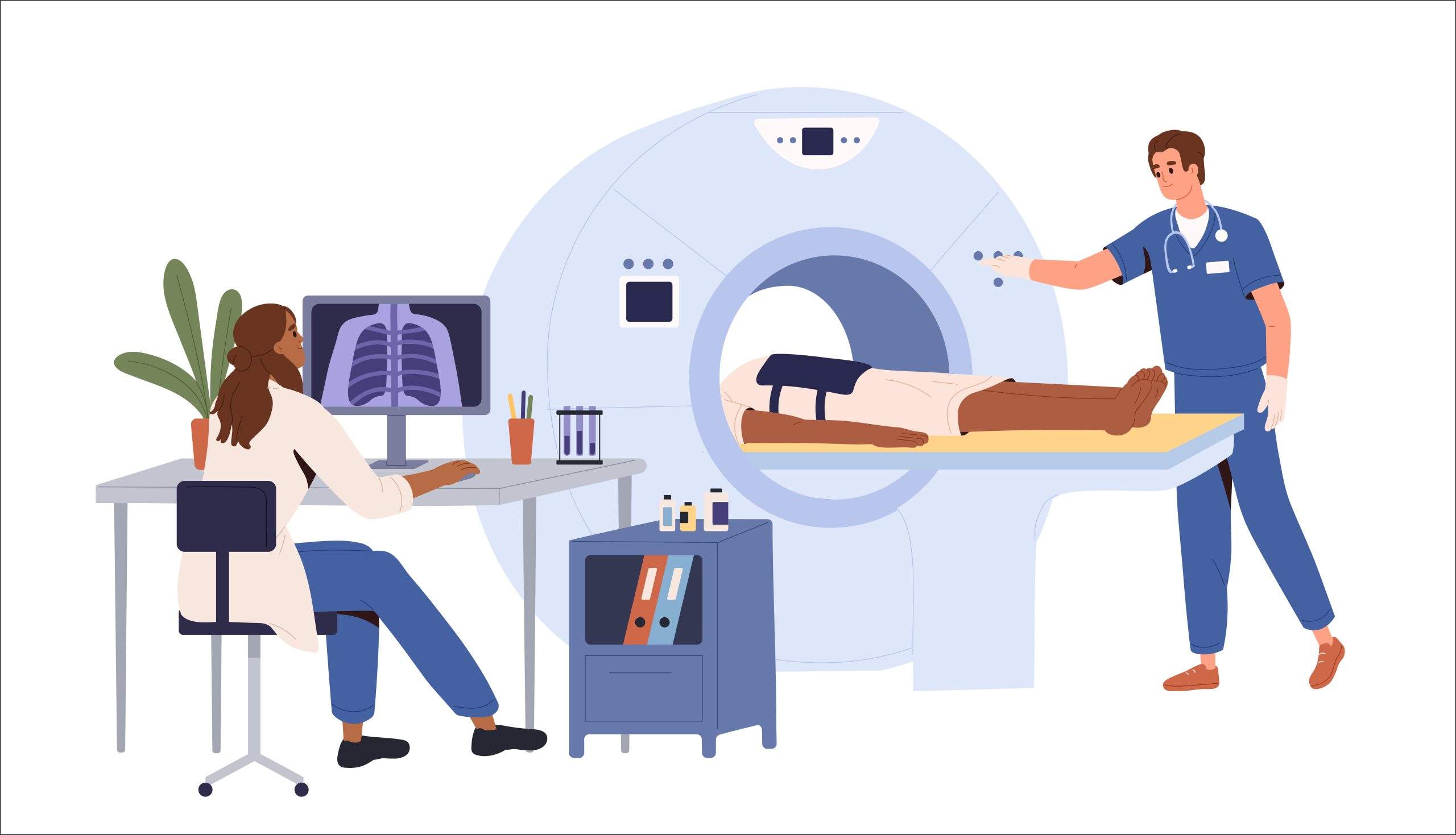Answers to Common Questions about Radiation Safety
When it comes to cancer treatment, radiation therapy stands out as a powerful tool, effectively targeting cancer cells and shrinking tumors. At Mahatma Gandhi Cancer Hospital & Research Institute, we incorporate radiation therapy into the treatment plans of numerous cancer patients, whether as a standalone treatment or as part of a comprehensive approach alongside surgery, chemotherapy, or other therapies. Let’s understand to dispel common misunderstandings and address concerns about radiation safety.
Radiation and Radioactivity: Clarifying the Basics
It’s important to start by understanding that radiation treatment, unlike nuclear reactions, doesn’t render patients radioactive. External-beam radiation therapy, the most prevalent type, utilizes controlled x-rays emitted from a linear accelerator. These rays are meticulously calibrated to target tumor cells while minimizing impact on healthy tissue. Importantly, radiation is only active during treatment sessions. This means that once the linear accelerator is off, there’s no risk of transferring radiation to others.
Protecting Healthy Tissue During Treatment
A frequent concern is whether radiation can inadvertently damage surrounding healthy tissue. Rigorous planning and advanced technology play pivotal roles in preventing such occurrences. Medical physicists work tirelessly to ensure that radiation beams are accurately calibrated to reach the designated areas. Additionally, custom-made masks and molds are often employed to immobilize patients during treatment, guaranteeing pinpoint accuracy in directing radiation to the precise locations requiring treatment.
Internal Radiation (Brachytherapy) Explained
Internal radiation implants, known as brachytherapy, are another facet of radiation treatment. These implants are inserted near or within the tumor site and emit radiation to combat cancer cells. The radioactive material contained within these implants decays gradually, emitting energy. However, the distance this radioactivity travels is restricted, and the implants are thoroughly tested and sealed to prevent leakage.
Balancing Contact Precautions
Questions often arise about potential risks associated with physical contact after brachytherapy. While the majority of concerns center around prolonged interaction with children due to their rapid growth, we offer tailored guidance for those scenarios. The treatment’s variability and the specifics of each case lead to personalized advice, ensuring safety without compromising connection.
Intimate Contact and Prostate Seed Implants
For those undergoing prostate seed implants, concerns about intimacy with partners may arise. These implants are sealed sources of radiation, and close contact doesn’t pose a risk. Occasionally, short-term sleep position adjustments might be recommended. However, it’s essential to understand that general intimate contact doesn’t create danger.
Post-Radioactive Iodine Therapy Precautions
Radioactive iodine therapy, a standard approach for thyroid cancer, involves ingesting radioactive iodine. The treatment effectively targets thyroid cells, leaving healthy cells unharmed. Following therapy, trace amounts of radioactivity might be released in body fluids temporarily. Patients receive comprehensive guidelines to minimize potential exposure risks to others during this period.
Imaging Tests and Temporary Radioactivity
Certain imaging tests involve injecting a small quantity of radioactive material into the body to diagnose diseases, a practice known as nuclear medicine. The radioactive substance seeks specific cells or tissues, including cancer cells, binding to them. As the body naturally eliminates the material through biological processes, the temporary radioactivity naturally dissipates without leaving lasting effects. We provide clear instructions before the test and even offer information cards for security inquiries.
Conclusion
Radiation therapy is a precise and safe treatment modality, carefully tailored to maximize efficacy while safeguarding patients and their loved ones. Our experts are dedicated to ensuring you understand each aspect of your treatment journey, and addressing any concerns along the way. Your well-being is our primary focus, and we’re here to guide you through the maze of radiation safety with expertise and compassion.

Written by
Dr. Partha Sarathi Bhattacharyya,
MD, Radiation Oncologist
Mahatma Gandhi Cancer Hospital and Research Institute, Visakhapatnam













